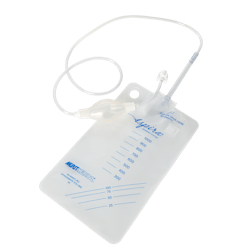Home-based healthcare options in interventional radiology
Home-based healthcare has a long and rich tradition in the United States. Most available metrics suggest that home healthcare constitutes a roughly $100 billion per year industry, with projections indicating continued growth over the coming decades. Some of the motivating factors driving this trend are easy to appreciate: The aging of the U.S. population, coupled with the well-documented rise in various chronic conditions, suggests there will soon be an inflection point where the demand for quality healthcare will outstrip the ability to deliver it.
Meanwhile, the cost of care delivery has become an omnipresent concern, and options for extending care outside of the clinical setting offer a creative solution to address patients’ care requirements without overburdening the already stressed U.S. healthcare system. For example, some studies show a small but statistically significant benefit for home palliative care services compared to usual care in reducing symptom burden for patients. In turn, palliative care has been consistently found to be less costly compared to other forms of medical treatment. At our institution, we have also found that embracing home-based healthcare solutions frees up resources dedicated to in- and out-patient services, while also helping to relieve traditional bottlenecks, thereby decreasing patient wait times, improving patient satisfaction surveys, and potentially helping to retain patients that may be lost to other facilities. All these factors play a role in the bottom line for the organization as a whole. Yet, the value of home-based healthcare can be measured in more than mere dollars and cents.
Beyond the bottom line
While conversations around home-based care options typically center around their ability to control escalating costs and/or how they can improve efficiency, these services also offer tremendous opportunity to improve patients’ quality of life. Within my specialty of interventional radiology, the advent of tunneled drainage catheters provides a worthy example. The primary indication for using these devices are to drain accumulated fluid from the pleural or peritoneal cavity associated with malignant pleural effusion or malignant ascites. These are patients who are often in poor health with serious medical conditions; among other implications, the accumulation of fluid contributes to difficulty breathing.
On the other hand, the ability to place a tunneled catheter in the clinic and then have the patient follow-up with community-based agencies for monitoring reduces the need for either a thoracentesis or a paracentesis, thereby avoiding any associated complications, while also allowing the patient to stay in a comfortable and familiar environment. From the provider perspective, the selective use of at-home services frees up outpatient beds. Perhaps more importantly, though, in this subsection of patients, the use of at-home services helps empower the patient and provides a more compassionate alternative to the need to attend multiple medical visits or undergo numerous procedures.
Our clinic has been using a drainage system for several years now equipped with an active vacuum pump technology that enables rapid and efficient drainage in appropriately selected patients. More recently, we have adopted another drainage system, which is similar in function but has some keyThe use of in-dwelling catheters is just one way our clinic uses home-based healthcare options to better serve our patients.
Following are some other examples of how we use these services in our routine interactions with patients:
● Feeding tubes – there are a wide range of indications for employment of enteral and/or parenteral tube feeding; most commonly, it is used in patients with dysphagia who therefore cannot obtain adequate nutrition via oral consumption of food.
● IV antibiotics – radiology services perform several types of vascular access procedures that require after care with intravenous antibiotics.
● Hemodialysis – We have seen rapid growth in use of at-home dialysis services in our clinic. There may be several potential benefits: for example, we have found that patients are able to dialyze for longer periods of time and the risk of nosocomial infection is significantly reduced if not eliminated.
There are some barriers to the widespread adoption of home-based healthcare services that should be acknowledged. Indeed, patient selection is paramount to success, and inherently, certain medical conditions cannot be reliably managed with at-home options. At the same time, there is need for proper patient training and institutional support for these kinds of services, and there may be regional disparities in the availability of qualified professionals to serve patients’ best interest. However, when available, and for the right patient, home-based healthcare offers myriad benefits for providers, patients, health organizations, and the healthcare system in general.
About the Author
Michael Serle
Michael T. Serle, PhD, PA-C, is a physician assistant affiliated with the Moore Regional Hospital in Pinehurst, N.C. He recently completed a doctorate in Medical Science with a concentration in Executive Healthcare Leadership. Mr. Serle reports no financial interest in the content mentioned herein.

